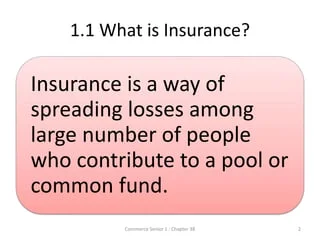The Main Principles Of Pacific Prime
Table of ContentsThe Of Pacific PrimePacific Prime Things To Know Before You Get ThisWhat Does Pacific Prime Mean?Pacific Prime for Beginners
In a lot of states, the insurance provider is needed to send you a duplicate of the adjustments to your policy. It is vital that you review Recommendations or Bikers so you understand how your plan has actually transformed and if the policy is still sufficient to satisfy your needs. To obtain a duplicate of your insurance plan, please contact your insurance policy agent or business.
The Institute of Medicine (IOM) Committee on the Effects of Uninsurance launches an extended examination of evidence that addresses the importance of medical insurance coverage with the magazine of this report. Protection Issues is the very first in a series of six records that will certainly be issued over the next two years documenting the reality and repercussions of having actually an estimated 40 million people in the USA without health and wellness insurance coverage.

What Does Pacific Prime Mean?
The objective of this series of studies is to redouble policy interest on a historical issue. Adhering to the lengthiest economic expansion in American background, in 1999, an approximated one out of every six Americans32 million grownups under the age of 65 and greater than 10 million childrenremains uninsured (Mills, 2000).

Ten percent of the populace represent 70 percent of health and wellness treatment expenditures, a correlation that has actually remained constant over the past 3 years (Berk and Monheit, 2001) - international travel insurance. Hence medical insurance remains to serve the function of spreading threat even as it increasingly finances routine treatment. From the perspective of health treatment carriers, insurance policy brought by their patients helps protect a profits stream, and neighborhoods gain from economically feasible and secure health and wellness care specialists and institutions
Federal government provides medical insurance to populations whom the private market might not offer effectively, such as disabled and senior citizens, and populaces whose accessibility to health and wellness care is socially valued, such as children and pregnant ladies. The supreme ends of health insurance policy protection for the private and neighborhoods, including work environment communities of workers and employers, are boosted health end results and lifestyle.
Pacific Prime Fundamentals Explained
Employees rank health insurance policy first by much in relevance amongst all the benefits supplied in the work environment (Salisbury, 2001). Although there have actually been large investments of individual and public funds to provide medical insurance, many individuals still have no insurance coverage. Regardless of extensive coverage of survey searchings for and healthcare research study results, the general public stays overwhelmed and misinformed about Americans without wellness insurance coverage and the effects of doing not have insurance coverage.

Without concern, the complexity of American healthcare funding mechanisms and the wide range of sources of details contribute to the general public's complication and suspicion regarding wellness insurance policy statistics and their interpretation. This report and those that will comply with aim to distill and present in easily easy to understand terms the substantial research that births on inquiries of medical insurance coverage and its importance.
Fifty-seven percent of Americans questioned in 1999 believed that those without medical insurance are "able to obtain the treatment they require from physicians and medical facilities" (Blendon et al., 1999, p. 207). In 1993, when national interest was focused on the issues of the without insurance and on pending healthcare legislation, just 43 percent of those questioned held this belief (Blendon et al., 1999).

They also get fewer preventative solutions and are much less most likely to have normal look after persistent conditions such as high blood pressure and diabetes. Persistent conditions can bring about pricey and disabling issues if they are not well handled (Lurie et al., 1984; Lurie et al., 1986; Ayanian et al., 2000). One nationwide survey asked more than 3,400 grownups regarding 15 very severe or somber conditions.
The Best Guide To Pacific Prime
Extra proof is presented later on in this phase in the discussion of insurance policy and accessibility to healthcare. https://www.kickstarter.com/profile/pacificpr1me/about. People without medical insurance are young and healthy and balanced and choose to go without coverage. Virtually half (43 percent) of those checked in 2000 thought that people without wellness insurance coverage are most likely to have illness than individuals with insurance coverage
Citizens and policy makers in emphasis team discussions define those without insurance as young people who have the opportunity to be covered and feel they do not require it (Doorperson Novelli, 2001). Contrasted to next page those with a minimum of some personal coverage, the without insurance are much less likely to report being in exceptional or great health (Firm for Medical Care Study and Quality, 2001).
SOURCE: Center for Expense and Funding Researches, Firm for Health Care Research and Quality, based upon MEPS information. Young person in between 19 and 34 are much much more most likely to do not have health and wellness insurance policy than any various other age. This is chiefly since they are less usually eligible for employment-based insurance as a result of the nature of their task or their brief tenure in it.
The assumption that people without insurance policy have better-than-average health adheres to from perplexing the fairly young age account of the uninsured with the better health, usually, of younger individuals. This obscures the link in between health and wellness standing and medical insurance. For those without accessibility to workplace wellness insurance coverage, poor health is a possible obstacle to buying nongroup protection due to the fact that such insurance coverage might be highly priced, exclude pre-existing conditions, or be just inaccessible.